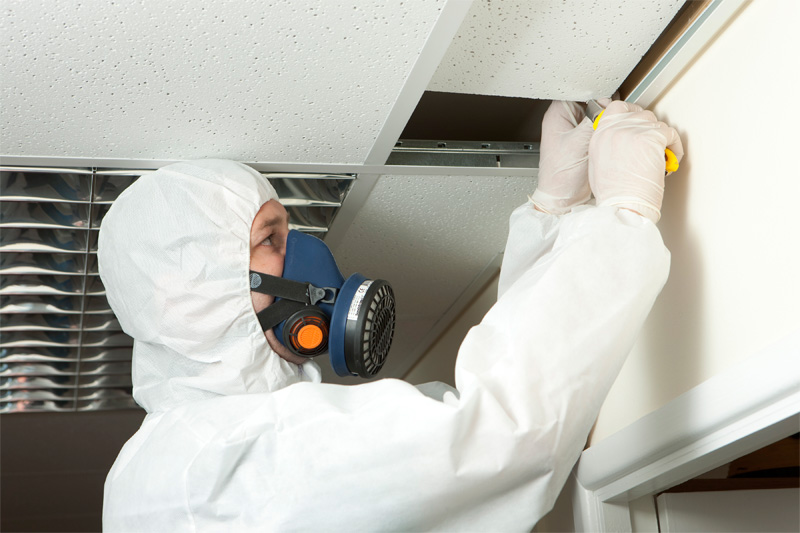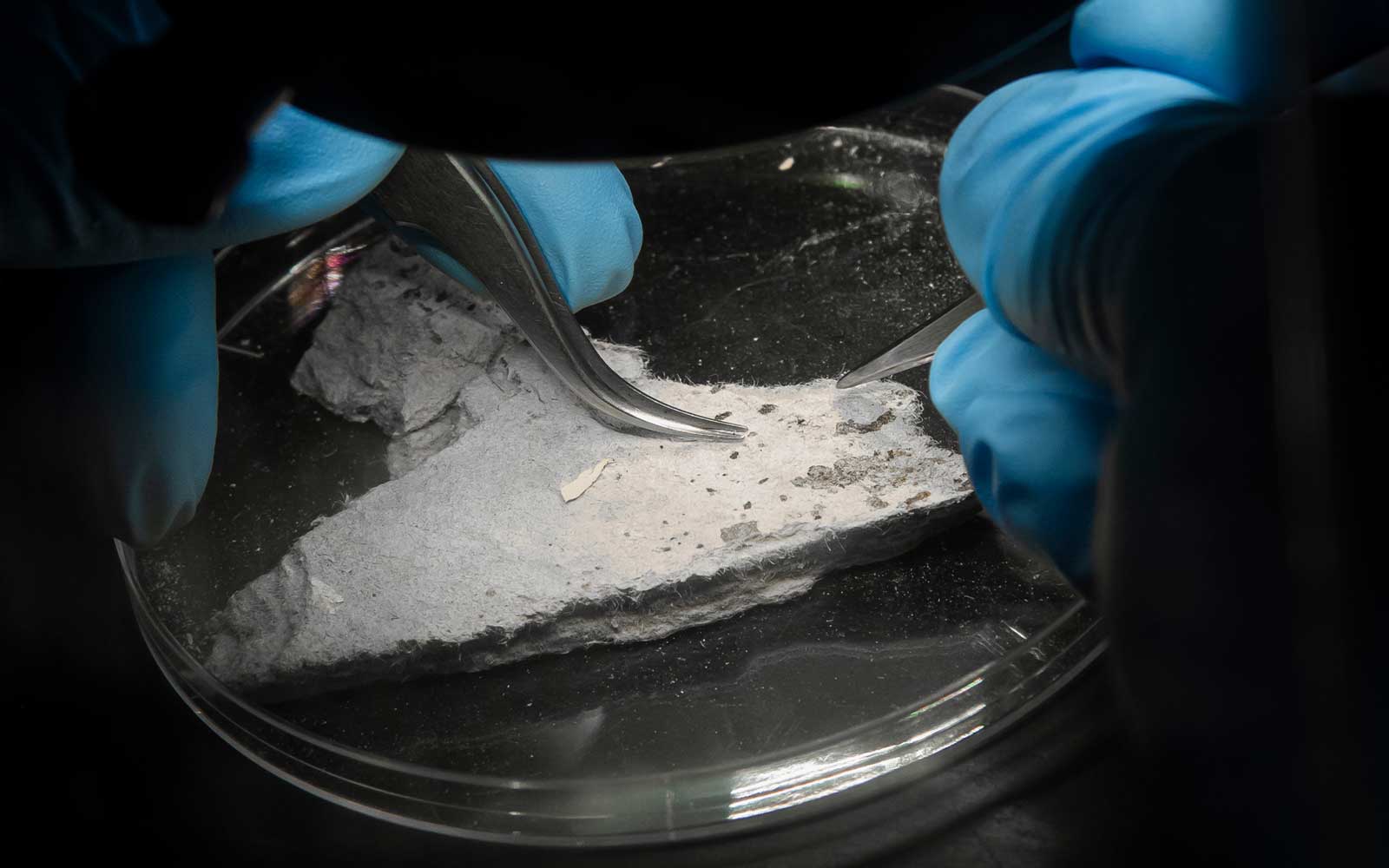The Complete Refine of Accredited Asbestos Checking to Ensure Building Conformity
In the realm of home management and conformity, the process of accredited asbestos screening stands as a vital component to ensure the security and health of owners. Comprehending the elaborate steps involved in this screening procedure is vital for property owners and managers alike. From the first analysis to the final interpretation of outcomes, each stage plays an important function in determining the visibility of asbestos within a residential or commercial property. Let's explore exactly how this careful procedure unravels to assure adherence to rigid policies and guard against possible carcinogen.
Accredited Asbestos Testing: Preliminary Assessment
In performing the first analysis for certified asbestos testing, a thorough exam of the residential or commercial property's products is crucial to accurately recognize possible asbestos-containing products. This critical action includes visually inspecting all locations of the building, consisting of ceilings, wall surfaces, flooring, insulation, and various other structure materials that might harbor asbestos. Special interest is offered to materials that are susceptible to damage or disturbance, as these situations can launch harmful asbestos fibers right into the air. In addition, sampling of believed products might be needed to verify the presence of asbestos through laboratory analysis.
Recognized asbestos assessors follow strict protocols set by governing bodies to guarantee the precision and dependability of the testing process. By carefully recording findings and making use of advanced testing methods, assessors can give residential or commercial property owners with an extensive report describing the presence of asbestos, if any type of, and the recommended steps for mitigation or removal. This preliminary evaluation sets the structure for subsequent activities to resolve asbestos concerns and make certain the safety and security and conformity of the home.
Example Collection Treatments for Asbestos Evaluating
Reliable sample collection procedures are essential in ensuring precise asbestos screening outcomes and compliance with governing requirements. When collecting samples for asbestos screening, it is critical to adhere to rigorous protocols to decrease the threat of contamination and make sure the dependability of the outcomes.
To start with, it is necessary to recognize the presumed asbestos-containing products (ACMs) and prioritize sampling areas based upon aspects such as the product's problem, access, and possibility for disturbance. Asbestos Testing. Samples should be collected from various places within the residential property to give a thorough assessment of asbestos visibility
During example collection, accredited experts ought to put on ideal individual safety devices (PPE) to secure versus asbestos direct exposure. They need to make use of tidy devices, such as non reusable gloves and plastic sheeting, to stop cross-contamination between samples. Examples must be very carefully gathered utilizing a specified technique, such as damp wiping or coring, and firmly secured in impermeable containers to maintain their stability during transport to the laboratory for analysis.
Research Laboratory Evaluation Process for Asbestos Samples
Upon completion of the sample collection procedure, the asbestos examples are meticulously delivered to accredited research laboratories for precise evaluation. The first action in the lab evaluation procedure is example preparation, where the collected examples are carefully refined to remove the explanation asbestos fibers.

Once the evaluation is total, an in-depth record is created, laying out the findings and confirming whether asbestos exists, the sort of asbestos fibers determined, and the concentration levels. This information is essential for residential property proprietors to take the necessary check my site steps to guarantee compliance with asbestos laws and safeguard the wellness of passengers.

Coverage and Interpretation of Asbestos Test Results
Recognized asbestos screening research laboratories offer in-depth records that use crucial insights into the visibility, type, and focus degrees of asbestos fibers discovered in samples collected from residential properties. These records are vital for property proprietors and managers to understand the danger presented by asbestos and make notified decisions regarding its management or removal. The records typically consist of details on the techniques used for testing, the locations where samples were taken, the kind of asbestos recognized (such as chrysotile, amosite, or crocidolite), and the focus levels of asbestos fibers identified.
Translating these results needs know-how to examine the potential wellness risks connected with asbestos direct exposure, figure out the appropriate strategy, and guarantee regulatory conformity (Asbestos Testing). Depending on the searchings for, suggestions might range from proceeded monitoring and upkeep to encapsulation or complete asbestos reduction. Home owners must very carefully review these records and speak with asbestos professionals to establish a thorough plan for resolving any asbestos problems recognized
Ensuring Building Compliance With Asbestos Laws
To keep adherence with asbestos laws, homeowner should faithfully implement steps to guarantee conformity with suitable regulations and standards. This includes conducting routine asbestos examinations by approved professionals to identify any kind of visibility of asbestos-containing products within the building. As soon as asbestos is recognized, homeowner need to adhere to asbestos administration plans that summary proper control, elimination, or encapsulation procedures to avoid direct exposure and spread of asbestos fibers. Compliance likewise entails keeping detailed documents of asbestos testing, upkeep, and removal tasks for assessment purposes.
Homeowner ought to offer asbestos recognition training to staff members and owners to minimize the risk of asbestos exposure and make sure correct handling of products that may include asbestos. Furthermore, it is critical to remain notified about any type of updates or modifications in asbestos policies to adjust management practices accordingly. By proactively dealing with asbestos compliance requirements, residential or commercial property owners can develop a secure atmosphere for residents and mitigate potential lawful and health and wellness risks Read More Here connected with asbestos exposure.
Conclusion
Finally, approved asbestos testing is a crucial procedure for making sure home compliance with laws. The initial analysis, sample collection treatments, lab evaluation, and interpretation of outcomes are very important steps in this procedure. By following these treatments, homeowner can recognize and address any asbestos risks existing, protecting the health and wellness of occupants and preserving compliance with regulative needs.